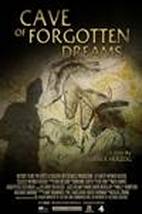But that is about all I would have had to say about Thor. I have much more to say about Werner Herzog's Cave of Forgotten Dreams. Although I am not always sure what it is I want to say about this.
First of all the subject matter of the film is eerily moving. A cave with paintings dating back over 30,000 years is discovered in France and the area is immediately sealed off because of the magnificence and significance of the find. The paintings are so pristine some think they are modern fakes.
And there is something about this, this connection to our ancient past that almost brings tears to the eyes. Some hand from the past reaching out to us and us back to them, forming a connection. I do not know how to describe the emotion it creates.
And neither does Herzog or any of the people in the film precisely. They move back and forth between the science of the find to bits and pieces that are almost mystical. Herzog prods to get more mystical, more spiritual answers. One interviewee describes how he went into the cave for five days straight and became so overwhelmed emotionally he had to not go in the next day. He had to step back. It makes sense somehow. There is also discussion of how scientists and filmmakers both felt almost watched in the caves. You need not think of this as a supernatural (you also can feel free to do so).
There are disconnected bits about hunting using spear throwers. There are discussions of the artistic beauty of calcite covered cave bear skulls. These images are so old and yet seem so new. There is no context, no real way to ever know the purpose--or perhaps more chilling, the utter lack of purpose--in their creation. Is this art for the sake of art? Is this a Stone Age art gallery? There are hints of a religious purpose but they are only hints.
Perhaps the eeriness, the meaning comes from these ancient images making you feel connected and yet small, a small part of some large progression.
The film, the narration and interviews, seems to struggle to make sense of what this find means and how to place its significance in our modern world. It is baffling but this does not ruin or in any way harm the movie. It is as if we have caught Herzog and the various art historians, archeologists et al trying to make sense of this themselves. It would be interesting to follow up with these people over time. I suppose one could do this by awaiting their various papers and books on the subject.
The artists in these caves did not paint on flat surfaces but used the curved and rounded walls of the caves as part of their paintings (not unlike many modern painters who are using three dimensional paintings). You would not get the full effect of these paintings in a 2D movie. Luddites can go back to cawing about how all movies should be black and white and silent. They are just plain silly.
3D is like a hammer. It is a tool. You can use it to create a better movie, like Herzog does here, or you can make Resident Evil IV.
I am glad Herzog had the exclusive right to film here rather than a James Cameron (with all due respect to his Titanic documentary). He made a movie that is beautiful and thought-provoking in that it raises more questions than it provides answers.
Postscript-If anyone can give me a definitive idea as to what Herzog's postscript is about I will be grateful. We are all mutant albino crocodiles peering into the past? If you say so Werner. Who am I to argue?



 RSS Feed
RSS Feed